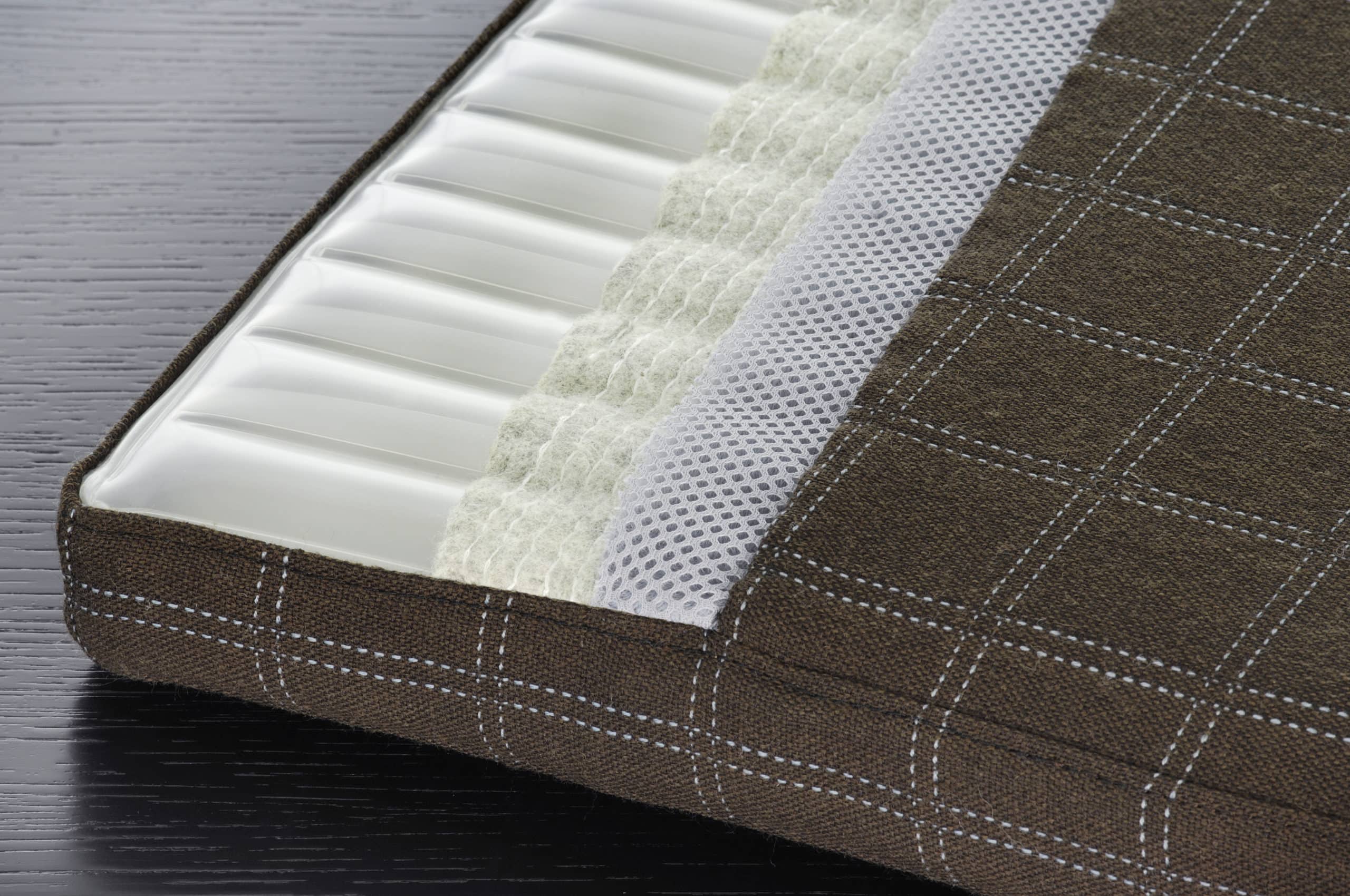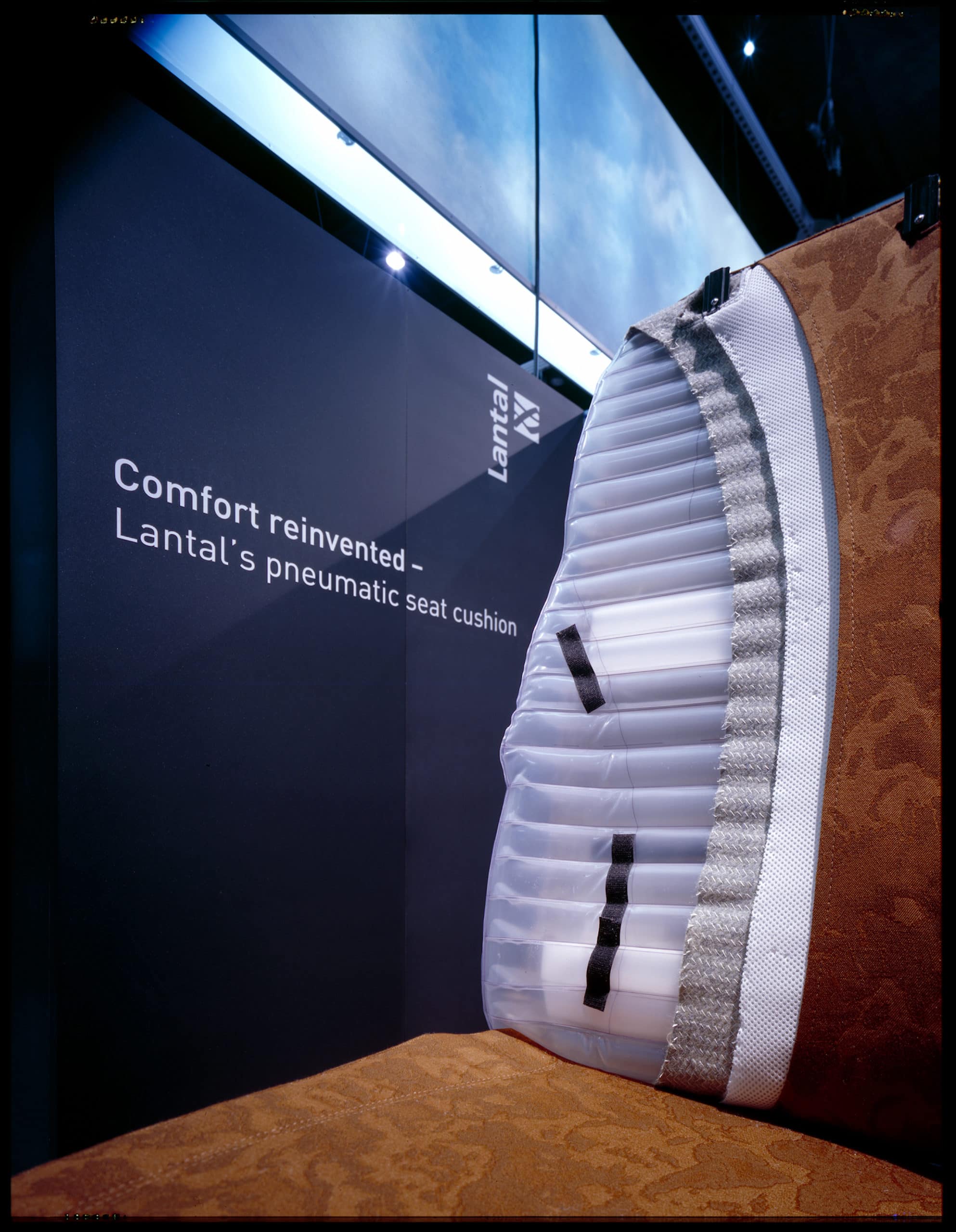Sitting on Air: Lantal’s Pneumatic Comfort System
Share

APEX Insight: Forget walking on air. How about sitting on it? Lantal’s Pneumatic Comfort System (PCS) lets passengers do just that. In the second installment of our series on aircraft seats, we look at Lantal’s PCS as a lighter, more hygienic and eco-friendly alternative to traditional foam seats.
This story was originally published in March/April issue of APEX Experience magazine.
With Lantal Textiles having been in the business for well over 130 years, its latest venture was both a natural progression and happenstance. While visiting an innovation fair in Switzerland in the early aughts, then-owner Urs Baumann was awestruck by a bench with air cushions. Then and there he decided to bring the concept to aircraft seats.
The cushion itself looks quite delicate, but it’s not. Encasing the air is a welded polyurethane foil, the same heavy-duty material used to package food. The cushion is then wrapped in fire-retardant Nomex and Kevlar fabrics that protect from accidental puncture. On top of that, 3-D fabric absorbs and dissipates moisture.
“It’s really a quality, sturdy cushion. It won’t break,” says Thomas Steiner, vice-president of Pneumatic Comfort System (PCS), Lantal. But for customers with doubts, Steiner offers a pen and asks them to stab a sample as hard as they can. “Usually the pen breaks, but not the cushion,” says Lou Rickenbacher, the company’s director of Markets.
But, why air? Well, nothing – not even foam – is lighter than air. The PCS offers weight savings of up to five kilograms per first-class seat, which of course reads as dollar signs for operators. Since the cushion doesn’t absorb liquids, it’s considerably more hygienic than foam and can be recycled. Comfort is also improved, especially on long-haul – a point proven by Solar Impulse pilots Bertrand Piccard and André Borschberg, who selected PCS over memory foam for their around-the-world journey, the longest flight lasting five days and five nights.

Special features make PCS more than just a replacement for foam. A pump-and-valve block controls the airflow to the cushion and is generally mounted on a bracket and bolted to the seat. Sensors continually monitor the ambient and internal air pressure while programmed software algorithms adjust to altitude changes and passenger-controlled preferences. Gap fillers, pockets that can expand with air to fill spaces between the seat pan and backrest while in recline or lie-flat position, offer a premium comfort experience. An air-pulsing massage feature could also be a source of revenue, Lantal suggests.
The system has already flown more than 175 million flight hours, with more than 20 projects concluded on first- and business-class seats on the likes of Swiss, Lufthansa, Air Canada and jetBlue via collaborations with B/E Aerospace, Zodiac Aerospace, Recaro and other manufacturers. Likely due to installation costs and its reliance on power, the system is only currently flying in the front of the cabin, but Steiner says, “We do believe that the technology and the principle can be applied in all classes.” The company is in the stages of developing an economy-class version of the system.


